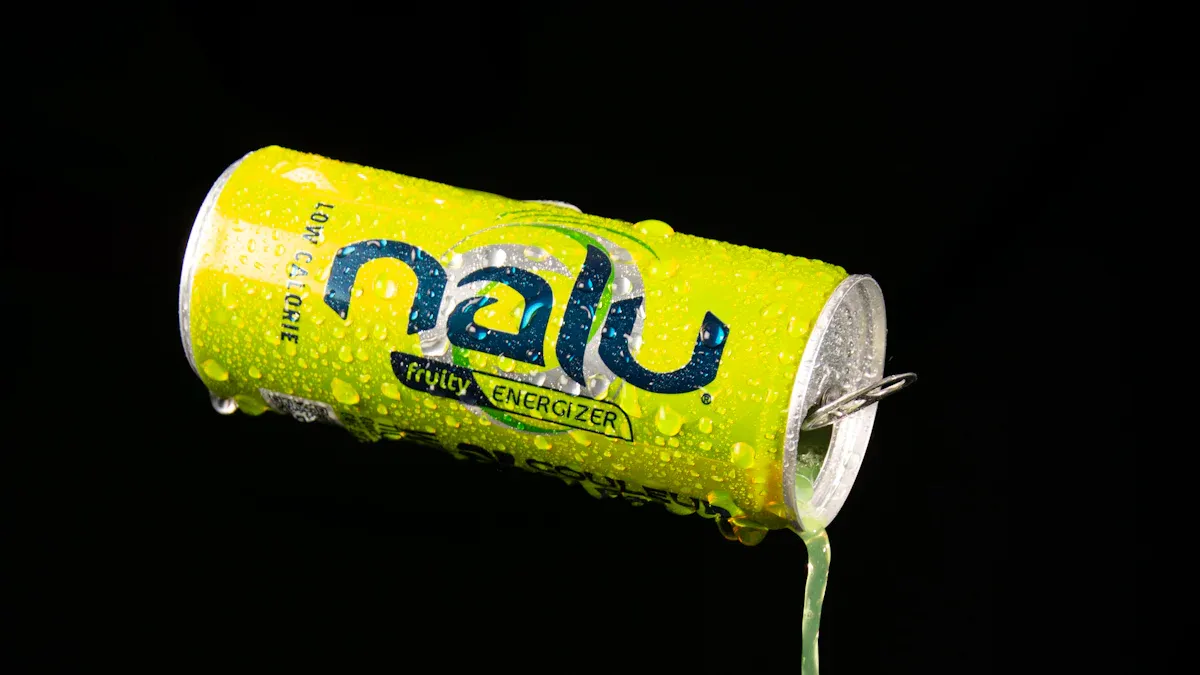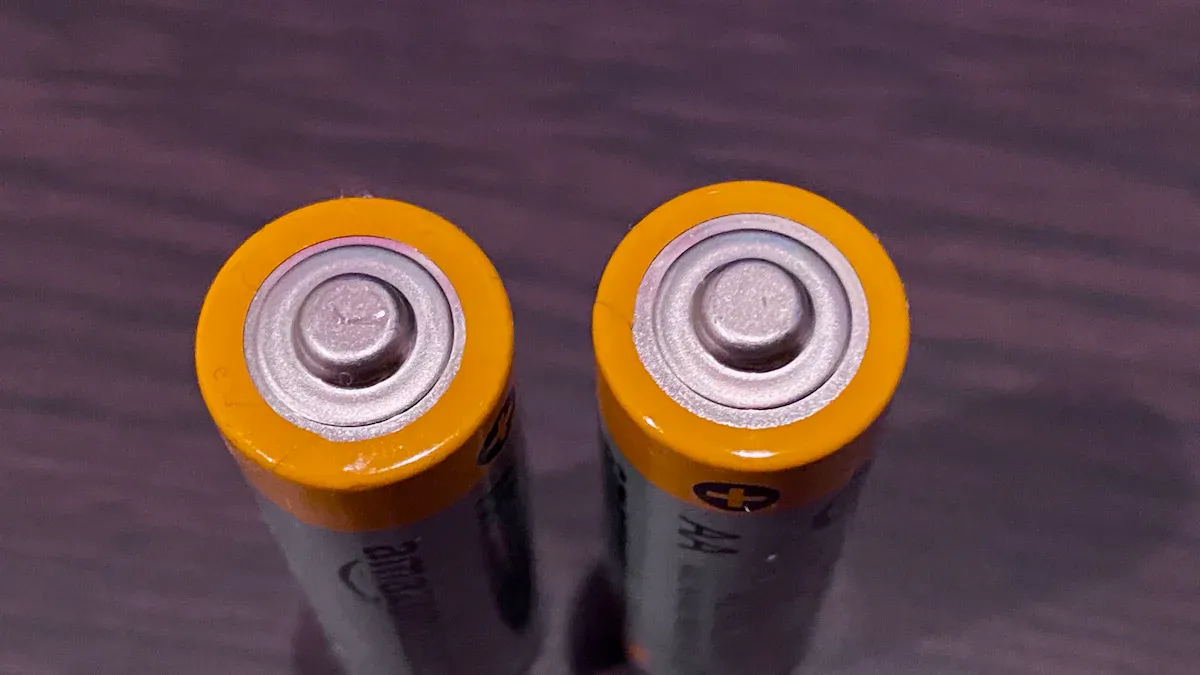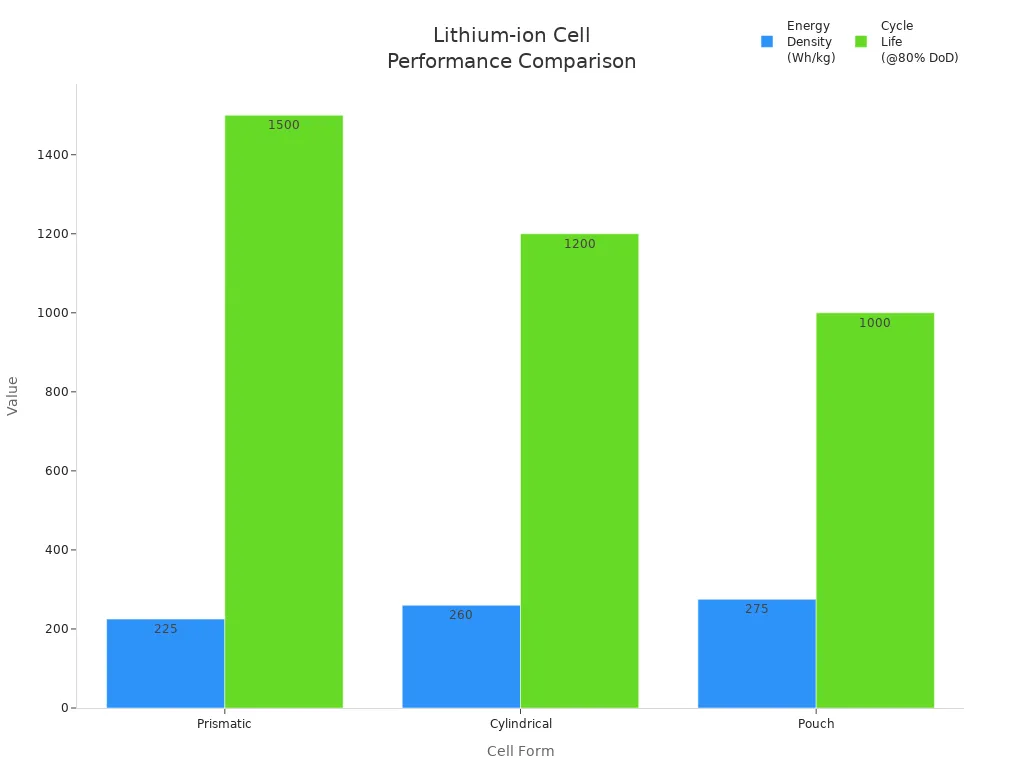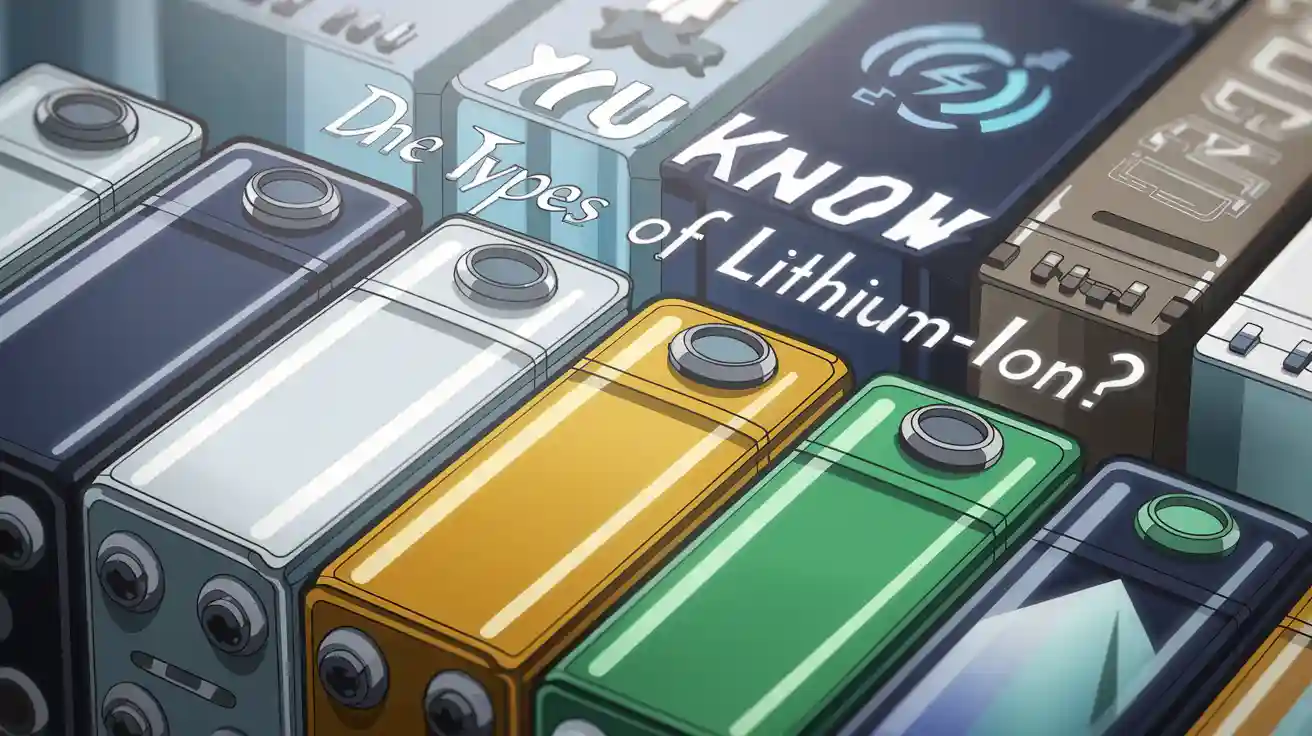Do you Know the Types of Lithium-ion?
You likely see lithium batteries everywhere, but not all are the same. The main types of lithium-ion batteries include LFP, NMC, LCO, NCA, LTO, and LMO. Each type has unique features that affect safety, lifespan, and performance. Knowing the types of lithium-ion batteries helps you avoid issues like smoking, overheating, fires, and explosions—incidents that nearly 54% of businesses have faced. Picking the right battery keeps you safe and makes your devices work better.
Key Takeaways
- Understand the six main types of lithium-ion batteries: LCO, LMO, LFP, NMC, NCA, and LTO. Each type has unique features that affect safety, lifespan, and performance.
- Choosing the right battery type is crucial for safety and device performance. For example, LFP batteries are safe and long-lasting, making them ideal for energy storage.
- High energy density is important for portable devices. LCO batteries are commonly used in smartphones and laptops due to their compact size and reliable performance.
- Safety features vary among battery types. LFP and LMO batteries offer enhanced safety, while LCO batteries require careful handling due to lower thermal stability.
- Consider the application when selecting a battery. Each type excels in different areas, such as LTO for rapid charging in industrial settings and NMC for electric vehicles.
Types of Lithium-ion Batteries

Understanding the types of lithium-ion batteries helps you choose the right battery for your needs. Each type has unique characteristics, advantages, and disadvantages. You can use the following table to compare their chemical composition and main features:
| Battery Type | Chemical Composition | Key Characteristics |
|---|---|---|
| Lithium Cobalt Oxide (LCO) | Cobalt | High energy density, short lifespan, low thermal stability |
| Lithium Manganese Oxide (LMO) | Manganese | Enhanced safety, fast charging, often blended with NMC |
| Lithium Iron Phosphate (LFP) | Iron, Phosphate | Cost-effective, safe, long lifespan, lower specific energy |
| Lithium Nickel Manganese Cobalt (NMC) | Nickel, Manganese, Cobalt | High energy density, stability issues due to high nickel content |
| Lithium Nickel Cobalt Aluminum Oxide (NCA) | Nickel, Cobalt, Aluminum | High energy density, less safe, used in high-performance EVs |
| Lithium Titanate (LTO) | Lithium, Titanium | Excellent safety, low capacity, high cost, unique anode composition |
Lithium Cobalt Oxide (LCO)
You often find lithium cobalt oxide batteries in consumer electronics. These batteries offer high energy density, which means they store a lot of energy in a small space. You use them in mobile phones, laptops, tablets, and digital cameras.
Characteristics:
- High energy density (150-200 Wh/kg)
- Compact and lightweight
- Cycle life: about 500 charge cycles
Advantages:
- Ideal for portable devices
- Reliable performance
Disadvantages:
- Short lifespan compared to other types
- Low thermal stability, which can lead to overheating
Typical Uses:
- Mobile phones
- Laptops
- Tablets
- Digital cameras
Tip: If you need a battery for a device you carry every day, lithium cobalt oxide is a common choice. However, you should replace it after a few years to avoid capacity loss.
Lithium Manganese Oxide (LMO)
Lithium manganese oxide batteries stand out for their safety and ability to handle high currents. You see these batteries in power tools and electric vehicles.
Characteristics:
- Enhanced safety (low thermal runaway risk)
- Fast charging capability
- Cycle life: about 700 charge cycles
Advantages:
- Stable at higher temperatures (up to 60°C)
- Cost-effective for large-scale use
- High current handling
Disadvantages:
- Reduced lifespan compared to other types
- Lower energy density than LCO and NMC
Typical Uses:
- Cordless power tools (e.g., Milwaukee M18 Fuel drill)
- Hybrid electric vehicles (Toyota Prius, Honda Insight)
- Electric buses and commercial fleets
| Battery Type | Thermal Runaway Risk | Temperature Tolerance | Safety Rating |
|---|---|---|---|
| Lithium Manganese Oxide | Low (120°C threshold) | Up to 60°C | ★★★★☆ |
| Standard Lithium-Ion | Medium (80°C threshold) | Up to 45°C | ★★★☆☆ |
Lithium Iron Phosphate (LFP)
Lithium iron phosphate batteries are popular for their safety and long lifespan. You often use these batteries in energy storage systems and electric vehicles.
Characteristics:
- Stable chemistry, resistant to thermal runaway
- Long lifespan (up to 4,000+ charge cycles)
- Lower energy density (120-160 Wh/kg)
Advantages:
- Cost-effective ($0.20 per usable kWh)
- Safer than other lithium-ion battery types
- Simple recycling process
- Lower environmental impact
Disadvantages:
- Lower energy density means larger size for the same capacity
- Not ideal for compact devices
Typical Uses:
- Home energy storage
- Electric vehicles
- Solar power systems
Note: If you want a battery that lasts many years and keeps you safe, lithium iron phosphate is a smart choice for stationary storage and electric vehicles.
Lithium Nickel Manganese Cobalt (NMC)
Lithium nickel manganese cobalt batteries balance energy density, lifespan, and cost. You see these batteries in many electric vehicles and energy storage systems.
Characteristics:
- High energy density (180-250 Wh/kg)
- Good cycle life (about 2,000 cycles)
- Stable chemistry, but high nickel content can affect stability
Advantages:
- Good balance of power and safety
- Suitable for high-capacity applications
Disadvantages:
- Higher cost due to cobalt
- Stability issues at high nickel levels
Typical Uses:
- Electric vehicles (Tesla Model S, Chevrolet Bolt, Tesla Model 3)
- Energy storage systems
| Battery Type | Energy Density (Wh/kg) |
|---|---|
| NMC | 180-250 |
| LFP | 120-160 |
| NCA | 200-260 |
Lithium Nickel Cobalt Aluminum Oxide (NCA)
Lithium nickel cobalt aluminum oxide batteries deliver high energy density and long lifespan. You find these batteries in high-performance electric vehicles.
Characteristics:
- High energy density (200-260 Wh/kg)
- Long service life
- Good specific power
Advantages:
- Excellent for high-performance applications
- Greater stability due to aluminum addition
Disadvantages:
- Safety concerns (thermal runaway risk, cell venting)
- Higher manufacturing costs
Typical Uses:
- Electric vehicles (especially high-performance models)
- Transit buses
Alert: NCA batteries can overheat and vent toxic gases if damaged or overcharged. You should use them with advanced battery management systems.
Lithium Titanate (LTO)
Lithium titanate batteries offer unique properties for rapid charging and extreme conditions. You use these batteries in applications that need fast charging and long lifespan.
Characteristics:
- Unique anode composition (lithium titanate)
- Long lifespan (often exceeds 10,000 cycles)
- Lower capacity compared to other types
Advantages:
- Rapid charging (full recharge in 6-10 minutes)
- Excellent safety (no dendrite formation, low risk of overheating)
- Operates in wide temperature range (-30°C to 55°C)
Disadvantages:
- High production cost
- Lower energy density
Typical Uses:
- Fast-charging electric buses
- Industrial energy storage
- Military and aerospace applications
| Battery Type | Cycle Life (Charge Cycles) |
|---|---|
| Li-Ion | 500 to 1,000 |
| LiFePO₄ | Exceeds 2,000 |
| LTO | Often exceeds 10,000 |
Tip: If you need a battery that charges quickly and lasts for years, lithium titanate is a top choice, especially for demanding environments.
Lithium-ion Battery Comparison
Choosing the right lithium-ion battery means looking at several important factors. You want to know how each type performs in terms of energy density, safety, lifespan, cost, and best uses. This comparison helps you match the battery to your needs and avoid common problems.
Energy Density
Energy density tells you how much energy a battery stores for its size and weight. If you need a battery for a portable device or an electric vehicle, high energy density matters. You get longer usage times and greater driving ranges.
- Lithium-ion batteries usually offer energy densities between 150 to 250 Wh/kg and 300 to 700 Wh/L.
- Newer types, such as lithium nickel manganese cobalt oxide (NMC 811), reach over 250 Wh/kg.
- Lithium cobalt oxide batteries provide high energy density, making them ideal for smartphones and laptops.
- Lithium nickel manganese cobalt batteries also deliver high energy density, which suits electric vehicles.
- Lithium iron phosphate batteries have lower energy density, so you need a larger battery for the same capacity.
| Battery Type | Energy Density (Wh/kg) | Typical Use |
|---|---|---|
| Lithium Cobalt Oxide | 150–200 | Phones, laptops |
| Lithium Nickel Manganese Cobalt Oxide | 180–250 | Electric vehicles |
| Lithium Iron Phosphate | 120–160 | Energy storage, EVs |
| Lithium Nickel Cobalt Aluminum Oxide | 200–260 | High-performance EVs |
| Lithium Manganese Oxide | 100–150 | Power tools, buses |
| Lithium Titanate | 60–80 | Fast-charging, industrial |
Tip: If you want a battery for a compact device, choose one with high energy density. For stationary storage, energy density is less important.
Safety
Safety features protect you from overheating, fires, and explosions. Manufacturers train staff in hazardous materials regulations and update safety practices often. You see regular inspections and audits to keep standards high.
- The failure rate for lithium-ion batteries has dropped to one-in-10 million.
- Most incidents happen because of poor packaging or handling, not the battery chemistry itself.
- Lithium iron phosphate batteries offer excellent safety features and resist thermal runaway.
- Lithium manganese oxide batteries also provide good safety, especially at higher temperatures.
- Lithium cobalt oxide batteries have lower thermal stability, so you must handle them with care.
| Battery Type | Safety Features | Risk Level |
|---|---|---|
| Lithium Iron Phosphate | Stable chemistry, low risk | Very Low |
| Lithium Manganese Oxide | Enhanced thermal stability | Low |
| Lithium Nickel Manganese Cobalt Oxide | Advanced management required | Medium |
| Lithium Cobalt Oxide | Sensitive to overheating | High |
| Lithium Titanate | No dendrite formation | Very Low |
Note: Always store and transport lithium batteries properly. Even with improved safety, poor handling can cause problems.
Lifespan
You want your battery to last as long as possible. Lifespan depends on the chemistry, usage, and environment. High cycle life means you can recharge the battery many times before it loses capacity.
| Battery Chemistry | Typical Cycle Life Range | Expected Years |
|---|---|---|
| Lithium Iron Phosphate | 2,000–10,000 | 5–15 |
| Lithium Nickel Manganese Cobalt Oxide | 1,000–2,500 | 2–10 |
| Lithium Titanate | 10,000–20,000 | 10–20 |
| Lithium Manganese Oxide | 700–2,000 | 3–7 |
| Lithium Cobalt Oxide | 500–1,000 | 2–5 |
- Temperature changes and heavy use can shorten battery lifespan.
- Lithium iron phosphate batteries last longer than most other types.
- Lithium titanate batteries offer the longest lifespan, but lower capacity.
- Lithium cobalt oxide batteries have a shorter lifespan, so you replace them more often.
| Environmental Factor | Effect on Battery Lifespan |
|---|---|
| Temperature | Affects aging and performance |
| Usage Conditions | Impacts capacity and health |
Alert: If you use batteries in hot or cold places, check the manufacturer’s guidelines to keep them working longer.
Cost
Cost varies by chemistry, application, and raw material prices. You pay more for batteries with high energy density or advanced safety features.
| Application / Sector | Typical Cost per kWh |
|---|---|
| Automotive (EVs/Hybrids) | $120–$180 |
| Solar Energy Storage | $400–$800 |
| Consumer Electronics | $200–$1,000+ |
| Industrial/Material Handling | $600–$1,200 |
| Medical Devices | $1,000–$5,000+ |
| Aerospace & Defense | $2,000–$5,000+ |
| Grid-Scale Utility Storage | $100–$300 |
- Material prices drive battery costs. When raw materials become scarce, prices go up.
- Companies invest in in-house manufacturing to control costs and secure supply.
- Lithium iron phosphate batteries are usually more affordable for large-scale storage.
- Lithium cobalt oxide batteries cost more for consumer electronics.
Tip: If you need batteries for electric vehicles or solar storage, compare costs and look for bulk discounts.
Best Uses
You want to match the battery to your application. Each type of lithium-ion battery has strengths for different uses.
- Lithium cobalt oxide batteries work best in portable electronics because of their high energy density and compact size.
- Lithium manganese oxide batteries suit power tools and buses, thanks to their high discharge rates and thermal stability.
- Lithium iron phosphate batteries excel in energy storage and electric vehicles, offering a long lifespan and strong safety features.
- Lithium nickel manganese cobalt oxide batteries balance energy density and cycle life, making them ideal for electric vehicles.
- Lithium titanate batteries fit industrial and military uses where rapid charging and long lifespan matter most.
Note: When you choose a battery, consider voltage, capacity, lifespan, charge/discharge rates, cost, safety, and environmental impact.
Types of Lithium Batteries: Applications
Consumer Electronics
You use lithium batteries every day in your cell phone, laptop, tablet, and camera. These devices need batteries with high energy density and compact size. Lithium cobalt oxide batteries are popular because they offer high energy density and reliable capacity. You also find lithium nickel manganese cobalt batteries in wearables and tablets. These types of lithium-ion batteries help your devices run longer between charges.
Tip: If you want your electronics to last all day, choose batteries with high energy density and stable capacity.
Electric Vehicles
Electric vehicles rely on lithium-ion batteries for power and range. You see lithium nickel manganese cobalt and lithium nickel cobalt aluminum batteries in electric cars, e-bikes, and electric buses. These batteries provide high energy density and large capacity, which means you can drive farther before recharging. Lithium iron phosphate batteries are common in electric buses and trams because they offer strong safety characteristics and long cycle life.
| Sector | Common Applications |
|---|---|
| Consumer Electronics | Cell phones, laptops, tablets, cameras, wearables |
| Electric Vehicles (EVs) | Electric cars, e-bikes, e-motorcycles, e-scooters, electric buses, trams |
| Renewable Energy Storage | Home energy storage systems for solar and wind energy |
| Industrial Equipment | Forklifts, automated guided vehicles (AGVs), warehouse robots |
Energy Storage
You use lithium batteries to store solar energy and power your home. Lithium iron phosphate batteries are the top choice for solar energy storage because they have stable characteristics, long lifespan, and safe operation. These batteries handle thousands of charge cycles and keep their capacity over time. You also see lithium nickel manganese cobalt batteries in large energy storage systems. They offer high energy density and strong capacity for backup power.
Note: If you want reliable energy storage, pick batteries with stable chemistry and long cycle life.
Industrial Uses
Factories and warehouses use lithium batteries in forklifts, automated guided vehicles, and robots. Lithium titanate batteries work well in these settings because they charge quickly and last for many cycles. You also find lithium iron phosphate batteries in industrial equipment due to their safety characteristics and steady capacity. Environmental factors like temperature and vibration affect battery performance, so you must choose batteries with robust characteristics for industrial use.
You need to understand the types of lithium-ion batteries and their characteristics before selecting a battery for your application. Each sector values different features, such as energy density, capacity, and safety. When you match the battery to your needs, you get better performance and longer lifespan.
Lithium Batteries Cell Forms

When you choose lithium batteries, you also need to think about the cell form. The shape and structure of a battery cell can change its characteristics, capacity, and how you use it. You see three main cell forms: cylindrical, prismatic, and pouch. Each form has unique advantages and disadvantages for rechargeable batteries.
Cylindrical
Cylindrical cells look like small tubes. You find these in button cell batteries, power tools, and many consumer electronics. This form uses mature technology and gives you good consistency in capacity and performance. Cylindrical lithium-ion battery cells often have high energy density, which means you get more capacity in a small space.
- Common uses: button cell batteries, rechargeable batteries for laptops, flashlights, and automotive applications.
- Advantages: strong structure, reliable characteristics, and easy manufacturing.
- Disadvantages: limited improvement in energy density, high requirements for battery management systems.
Prismatic
Prismatic cells have a rectangular shape. You see these in electric vehicles, stationary storage, and some consumer electronics. Prismatic lithium batteries offer high strength and use space efficiently. You get long life and stable capacity, but heat dissipation can be a challenge.
- Common uses: electric vehicles, button cell batteries for tablets, and energy storage systems.
- Advantages: space-saving design, strong casing, and good cycle life.
- Disadvantages: production standardization is difficult, and heat can build up inside the battery.
Pouch
Pouch cells look like flat packets. You find these in smartphones, wearables, and portable medical devices. Pouch lithium batteries are lightweight and customizable. You get high energy density and flexible capacity, but the structure is less robust than other forms.
- Common uses: button cell batteries for smartphones, rechargeable batteries for wearables, and electric vehicles.
- Advantages: flexible shape, high capacity, and lightweight design.
- Disadvantages: easy to damage, limited support for the battery structure.
Tip: If you want a battery with maximum capacity in a small device, pouch cells are a smart choice. For rugged uses, cylindrical or prismatic cells work better.
Comparing Cell Forms
You can see the differences in characteristics, capacity, and applications in the table below:
| Cell Type | Advantages | Disadvantages | Applications |
|---|---|---|---|
| Cylindrical | Mature technology, high energy density, good consistency | Limited energy density improvement, high BMS requirements | Consumer electronics, automotive, power tools, button cell batteries |
| Prismatic | High strength, space-efficient, long life | Difficult production standardization, heat dissipation issues | Electric vehicles, consumer electronics, stationary storage, button cell batteries |
| Pouch | Customizable form factor, lightweight, high energy density | Susceptible to damage, limited structural support | Smartphones, wearables, electric vehicles, portable medical devices, button cell batteries |
You also see differences in energy density and cycle life:
| Parameter | Prismatic | Cylindrical | Pouch |
|---|---|---|---|
| Energy Density (Wh/kg) | 200-250 | 240-280 | 250-300 |
| Cycle Life (@80% DoD) | 1,500 | 1,200 | 1,000 |

How Form Factor Affects Performance
The cell form changes how you use lithium batteries. Cylindrical cells give you strong structure and reliable capacity, which suits button cell batteries and rechargeable batteries for tools. Prismatic cells save space and offer long life, making them ideal for electric vehicles and stationar
-

 May.2025.11.24Ternary Lithium Battery vs Lithium-ion: Complete Comparison Guide (2025 Edition)Learn More
May.2025.11.24Ternary Lithium Battery vs Lithium-ion: Complete Comparison Guide (2025 Edition)Learn More -

 May.2025.11.214S2P 18650 14.8V Battery: Complete Technical Guide, Specs, Applications & SafetyLearn More
May.2025.11.214S2P 18650 14.8V Battery: Complete Technical Guide, Specs, Applications & SafetyLearn More -

 May.2025.11.18PCM vs BMS in Lithium Batteries: What’s the Difference and Which One Do You Need?Learn More
May.2025.11.18PCM vs BMS in Lithium Batteries: What’s the Difference and Which One Do You Need?Learn More -

 May.2025.11.17Custom Li-ion Battery Design for Medical Devices (2025 Comprehensive Guide)Learn More
May.2025.11.17Custom Li-ion Battery Design for Medical Devices (2025 Comprehensive Guide)Learn More -

 May.2025.11.17The Future of Lithium-Ion Batteries: Innovation, Sustainability, and Global Market TrendsLearn More
May.2025.11.17The Future of Lithium-Ion Batteries: Innovation, Sustainability, and Global Market TrendsLearn More
















